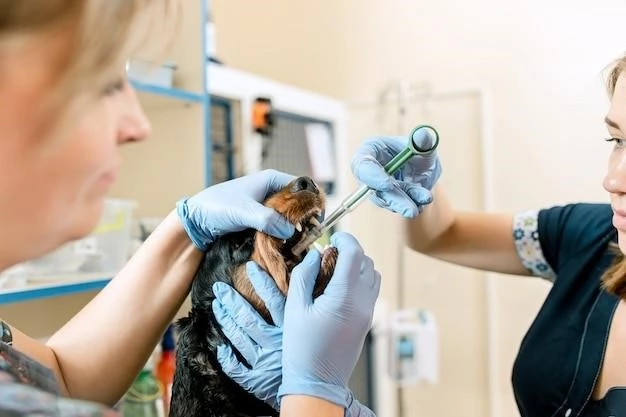Understanding Canine Hip Dysplasia
Canine hip dysplasia is a common condition among dogs, particularly in certain breeds. Understanding this disease is crucial for effective management and treatment. In this article, we will explore the causes, symptoms, diagnosis, and various treatment options available for dogs with hip dysplasia.
Introduction to Canine Hip Dysplasia
Canine hip dysplasia is a developmental condition that affects the hip joint, causing instability and pain in dogs. It is most commonly found in large and giant breed dogs, but can also occur in smaller breeds. This condition is characterized by a malformation of the hip joint, where the ball and socket do not fit properly. The abnormal formation leads to joint laxity, degeneration of the cartilage, inflammation, and ultimately, arthritis.
Genetics play a significant role in the development of canine hip dysplasia, with certain breeds being more predisposed to this condition. Symptoms of hip dysplasia typically manifest in young dogs, although they may not show signs until later in life. These symptoms can include decreased activity levels, lameness, reluctance to exercise, hind limb muscle atrophy, and difficulty rising or climbing stairs.
Early diagnosis and intervention are crucial for managing hip dysplasia effectively. Treatment options range from conservative approaches such as weight management, joint supplements, and physical therapy, to more invasive treatments like surgery. It is essential to work closely with a veterinarian to determine the best course of action for your dog’s specific case and provide them with a comfortable and active life despite this condition.
Genetics and Canine Hip Dysplasia
Genetics play a crucial role in the development of canine hip dysplasia, with certain breeds being more predisposed to this condition due to inherited factors. Breeds such as German Shepherds, Labrador Retrievers, Golden Retrievers, and Rottweilers are commonly affected by hip dysplasia. It is important for breeders to screen and select breeding pairs carefully to reduce the incidence of this condition in future generations.
In dogs with a genetic predisposition to hip dysplasia, environmental factors such as rapid growth, overfeeding, and excessive exercise at a young age can exacerbate the condition. Responsible breeding practices and proper care during a dog’s growth period can help minimize the impact of genetics on the development of hip dysplasia. By being aware of your dog’s breed predispositions and taking preventive measures, you can reduce the risk of hip dysplasia and promote their overall joint health.
Symptoms of Canine Hip Dysplasia

Recognizing the symptoms of canine hip dysplasia is crucial for early intervention and management. Dogs with hip dysplasia may exhibit signs such as decreased activity, stiffness, lameness, difficulty rising, bunny hopping gait, pain when touched on the hip area, and muscle atrophy in the hind legs. Some dogs may also show reluctance to climb stairs or engage in physical activities they once enjoyed. If you notice any of these symptoms in your dog, it is essential to consult with a veterinarian for a proper diagnosis and to explore treatment options to improve their quality of life.
Diagnosis of Canine Hip Dysplasia
Diagnosing canine hip dysplasia typically involves a combination of physical exams, imaging studies (such as X-rays), and possibly advanced diagnostics like CT scans or MRIs. Your veterinarian will evaluate your dog’s gait, range of motion, and any signs of discomfort. X-rays are commonly used to assess the hip joint for signs of dysplasia, arthritis, and joint abnormalities.
In some cases, sedation or anesthesia may be necessary to obtain accurate imaging results. It is important to work closely with your veterinarian to confirm the diagnosis and determine the extent of hip dysplasia. Early detection allows for timely intervention and the implementation of a treatment plan tailored to your dog’s specific needs and condition. Seek professional guidance to ensure the best possible outcome for your furry companion.
Treatment Options for Canine Hip Dysplasia
When it comes to treating canine hip dysplasia, there are various options available to help manage your dog’s condition and improve their quality of life. Treatment approaches may include weight management to reduce stress on the joints, joint supplements to support cartilage health, pain medications to alleviate discomfort, and physical therapy to strengthen muscles and improve mobility.
In more severe cases, surgical interventions like total hip replacement, femoral head ostectomy, or pelvic osteotomy may be recommended to address structural abnormalities and alleviate pain. It is crucial to consult with a veterinarian to determine the most suitable treatment plan based on your dog’s individual needs, stage of hip dysplasia, and overall health. By exploring all available options, you can provide your canine companion with the best possible care and support throughout their hip dysplasia journey.
Importance of Weight Management
Weight management plays a critical role in the overall management of canine hip dysplasia. Excess body weight puts added strain on the hip joints, exacerbating pain and inflammation associated with the condition. Maintaining a healthy weight for your dog is essential to reduce stress on the affected joints and slow down the progression of hip dysplasia.
Work closely with your veterinarian to develop a tailored diet and exercise plan that helps your dog reach and maintain an optimal body condition. Proper nutrition, portion control, and regular physical activity are key components of effective weight management for dogs with hip dysplasia. By keeping your dog at a healthy weight, you can improve their mobility, reduce discomfort, and enhance their overall well-being despite the challenges posed by this condition;
Joint Supplements and Canine Hip Dysplasia
Joint supplements can play a valuable role in supporting the joint health of dogs with hip dysplasia. These supplements often contain ingredients like glucosamine, chondroitin, omega-3 fatty acids, and MSM, which can help reduce inflammation, support cartilage health, and improve joint function. While joint supplements cannot reverse hip dysplasia, they may alleviate symptoms and slow down the progression of arthritis.
Consult with your veterinarian to determine the most suitable joint supplement for your dog based on their individual needs and the severity of hip dysplasia. When used in conjunction with other treatment modalities, such as weight management and physical therapy, joint supplements can contribute to enhancing your dog’s comfort, mobility, and overall quality of life. Regular monitoring and adjustments to the supplement regimen may be necessary to ensure optimal efficacy for your furry companion.
Physical Therapy for Dogs with Hip Dysplasia
Physical therapy plays a vital role in the holistic management of canine hip dysplasia. Through targeted exercises, stretching routines, and muscle strengthening activities, physical therapy aims to improve your dog’s joint mobility, reduce pain and inflammation, and enhance overall musculoskeletal function. Physical therapy can also help prevent muscle atrophy and maintain joint stability.
Collaborate with a licensed canine physical therapist to develop a customized rehabilitation program tailored to your dog’s specific needs and abilities. These therapy sessions may include underwater treadmill exercises, laser therapy, massage, and joint mobilization techniques. By adhering to a consistent physical therapy regimen, you can optimize your dog’s physical conditioning, improve their quality of life, and support their ongoing management of hip dysplasia.
Post-Surgery Care and Rehabilitation
After undergoing surgical intervention for canine hip dysplasia, post-operative care and rehabilitation are crucial for your dog’s recovery and long-term outcome. Following the guidance of your veterinarian or veterinary surgeon is essential to ensure a successful recovery process. Post-surgery care may involve pain management, incision site monitoring, and activity restriction to allow for proper healing.
Rehabilitation protocols, which may include physical therapy exercises, controlled movements, and gradual reintroduction to activity, are designed to enhance your dog’s strength, mobility, and joint function post-surgery. It is important to comply with the recommended rehabilitation plan and attend follow-up appointments to track your dog’s progress and address any concerns that may arise during the recovery period. By actively participating in your dog’s post-surgery care and rehabilitation, you can facilitate their healing process and improve their quality of life moving forward.
Long-Term Management of Canine Hip Dysplasia
Long-term management of canine hip dysplasia requires a comprehensive approach to ensure the ongoing well-being of your dog. This includes regular veterinary check-ups, monitoring of symptoms, adherence to treatment plans, and adjustments to care as needed. Weight management continues to be essential to reduce strain on the hip joints and maintain overall joint health.
Engaging in consistent physical therapy, offering joint supplements, and providing a comfortable environment that supports your dog’s mobility are key aspects of long-term management. Stay vigilant for any changes in your dog’s condition, such as worsening lameness or increased discomfort, and promptly consult with your veterinarian if new symptoms arise. By prioritizing proactive care and prioritizing your dog’s joint health, you can help them lead a fulfilling and active life despite the challenges of hip dysplasia.
Conclusion
In conclusion, understanding canine hip dysplasia is crucial for providing the best possible care for your furry companion. With a combination of proper weight management, joint supplements, physical therapy, and in some cases, surgical intervention, it is possible to manage the symptoms and improve the quality of life for dogs with hip dysplasia.
By being proactive in monitoring your dog’s condition, seeking early diagnosis, and working closely with your veterinarian to tailor a treatment plan to their individual needs, you can support their joint health and mobility. Remember that each dog is unique, so personalized care and ongoing management are key to helping them thrive despite the challenges of hip dysplasia. Stay informed, stay involved, and prioritize your dog’s comfort and well-being every step of the way.
